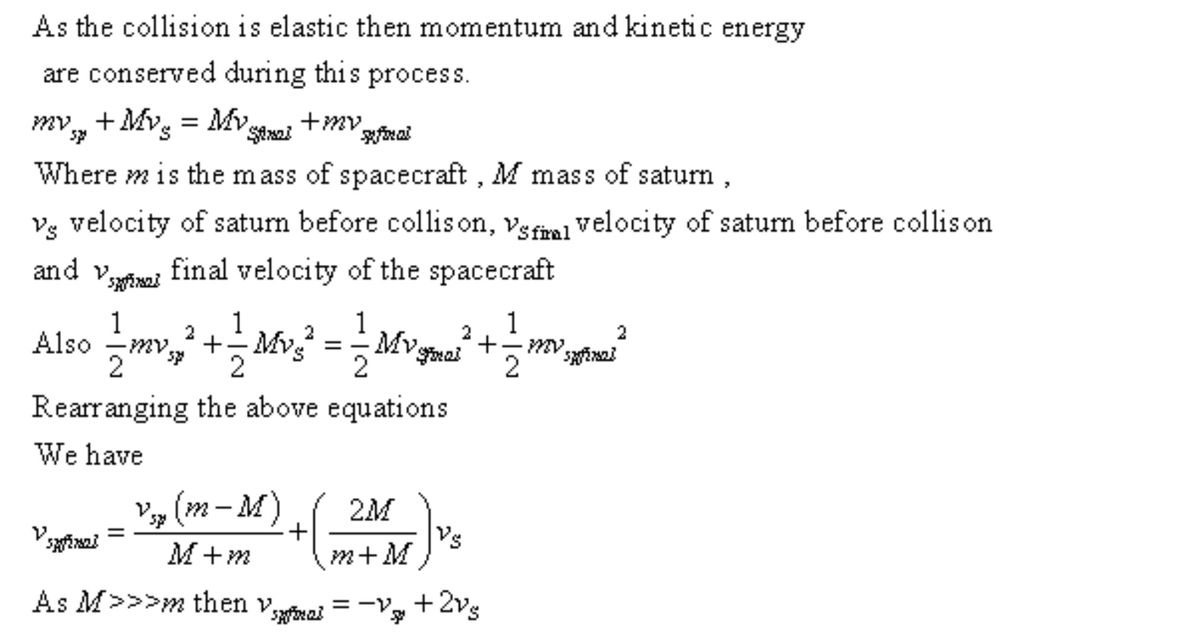A spacefship of mass 750 kg is moving at 12.5 km/s in the +x direction. It approaches the planet Saturn, mass 5.68 x10 26kg , which is moving in the –x- direction as shown in the figure. The gravitational attraction of Saturn accelerates the spaceship as it approaches and causes to swing around the planet and heads off in the same direction as Saturn. Several probes such as Voyager have used this to save on “gas”. Estimate the final speed of the spacecraft after it is far enough to be considered free of Saturn’s gravitational pull. Assume that the speed of Saturn is not affect due to its large mass.
An example of an elastic collision is The gravitational slingshot effect . A spacefship of mass 750 kg is moving at 12.5 km/s in the +x direction. It approaches the planet Saturn, mass 5.68 x10 26kg , which is moving in the –x- direction as shown in the figure. The gravitational attraction of Saturn accelerates the spaceship as it approaches and causes to swing around the planet and heads off in the same direction as Saturn. Several probes such as Voyager have used this to save on “gas”. Estimate the final speed of the spacecraft after it is far enough to be considered free of Saturn’s gravitational pull. Assume that the speed of Saturn is not affect due to its large mass. Express your answer in km/s. HINT: perfectly ELASTIC COLLISION.


Step by step
Solved in 2 steps with 1 images
